Rome neighborhood guide: 10 ‘hoods and how they differ
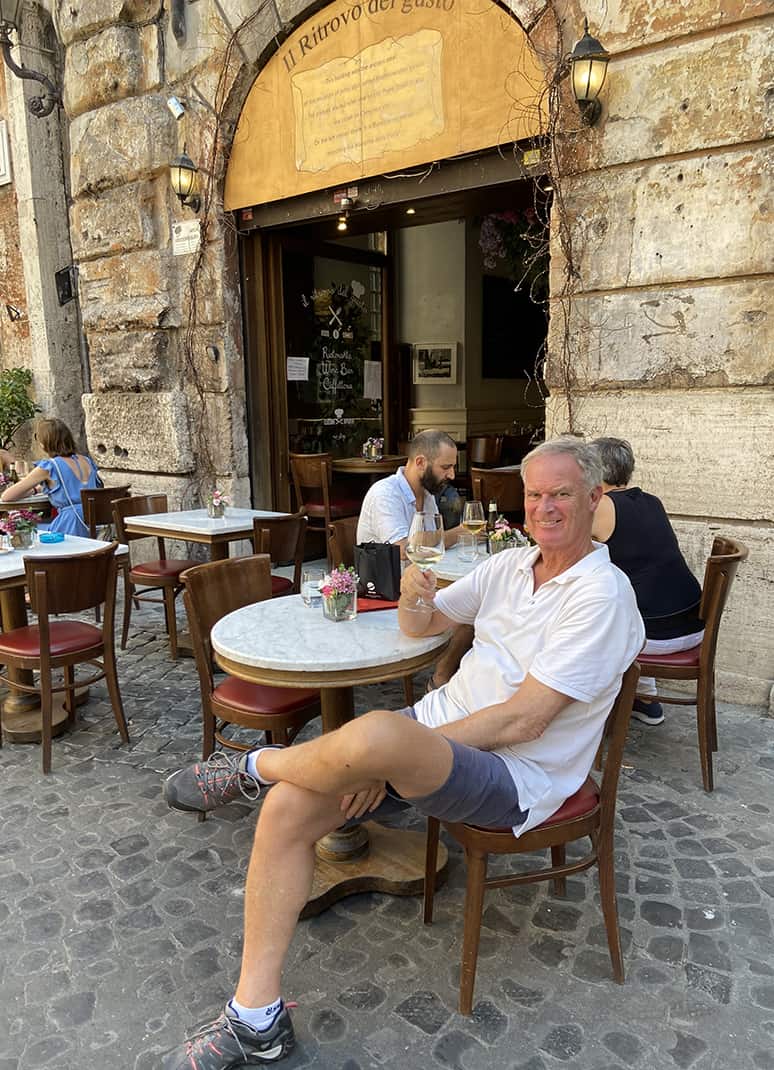
People who plan visits to Rome always ask me the same question: Can you recommend a place to stay? It’s a natural question but one I can’t answer.
How would I know? I’ve always lived in apartments during my 9 1/2 years here over two stints. I don’t live in a hotel. I lived in Denver for 23 years. I have no earthly idea where to stay in Denver. Instead, I give them other advice.
Pick the right neighborhood.
Traveling is a little like real estate. It’s location, location, location. Pick the right place to stay. What’s important to you? Close to the nightlife? Away from tourists? Near public transportation?
Use my Rome neighborhood guide. Then find your room.
Rome is laid out along both sides of the S-shaped Tiber River with the original Ancient Rome on the east side and the relatively newer neighborhoods, including the Vatican’s Prati on the west side. Every neighborhood is worth visiting, at least for a glass of wine.
I send thumbnail sketches on Rome’s neighborhoods to many friends and readers. Today for my blog I’m expanding the list and going more in depth. This guide breaks down 10 neighborhoods, starting from Centro Storico, known locally as the Center, and working my way out. They may include zones that could stand alone as neighborhoods but this is a general list. It includes points of interests, historical tidbits, advantages, disadvantages and advice on where to eat and drink. (I mentioned My Five Favorite Restaurants in Rome in last week’s blog. I link the list where appropriate and include another recommendation. Phone numbers do not include the 39 country code.)
Rooms? Sorry. You’re on your own there. I hear Rome’s AirBnBs are good. Apartments are fine bargains. That’s all I know.
I’m hearing from more readers who are finally coming to Rome after Covid locked up their passports for two years. Italy is back open for all those vaccinated. For everyone who loves Italy and believes in science, here is my Rome neighborhood guide.
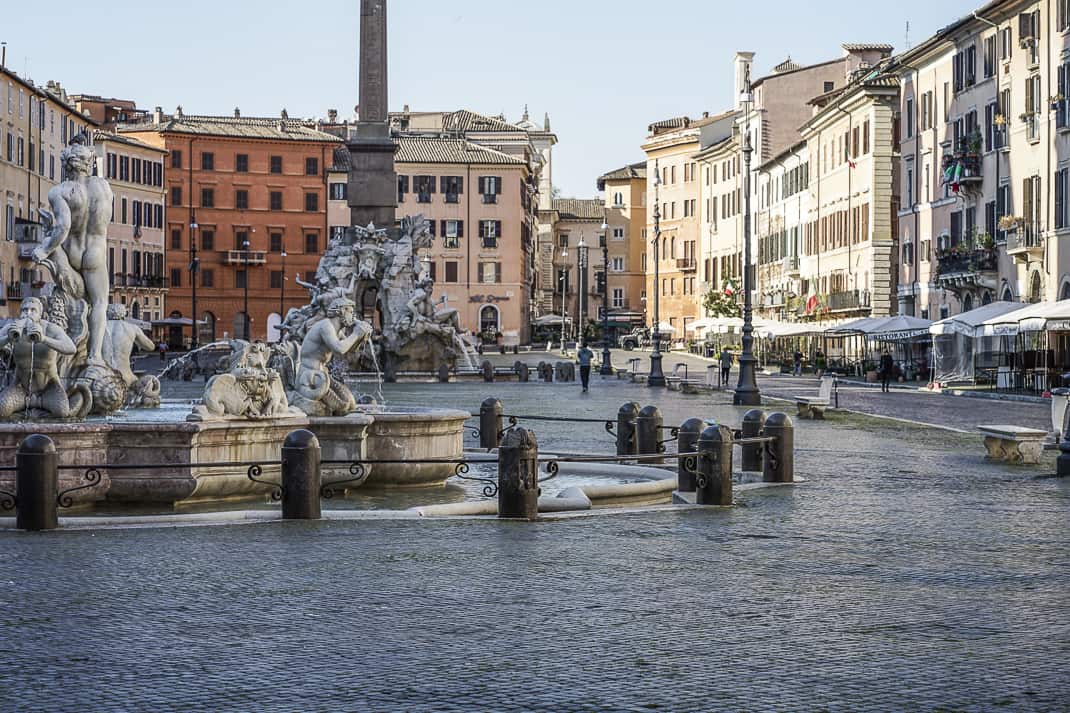
Centro Storico
This is arguably the most visited neighborhood in the world. Before Covid, Rome got about 10 million tourists a year, the second most in Europe behind Paris. Most of Rome’s must sees are in Centro Storico: Forum, Pantheon, Piazza Navona, Vittoriano, Campidoglio. That’s a partial list.
Despite the millions of visitors, Centro Storico has its quiet areas. Roam the winding, narrow cobblestone streets and you’ll stumble onto places not seen in tour guides. Restaurants and enotecas with outdoor seating are everywhere. Boutique shopping here is very good.
I looked at apartments here but they are pricey and small. I don’t want to dip my head just to enter my home.
Due to Rome’s selective clean-up policy, this is also arguably the cleanest neighborhood in Rome. That’s ironic as in the 18th century Rome was considered a dump with poorly paved roads in the Center with no lighting or sanitation.
Good restaurants are few here. Avoid eating in the big piazzas. They mass produce food for tourists who don’t know any different. Even a cappuccino on the Pantheon will run you 5 euros. (However, go around the corner to Via degli Orfani 84 and for 1.30 at Caffe Tazza d’Oro you can get the best cappuccino in the world, according to The New York Times and me.)
Because they’re still discovering artifacts underground, there is no convenient subway stop but bus lines are everywhere.
Place to eat: Renato e Luisa, Terrazza Borromini (click link to last week’s blog). La Fraschetta di Castel Sant’Angelo, Via del Banco di Santo Spirito 20, 06-6830-7661, noon-4 p.m., 7-11 p.m. Monday-Saturday. A rough and tumble classic trattoria across bridge from Castel Sant’Angelo. Phrases in Roman dialect deck the walls. Get all the classic Roman dishes such as pasta amatriciana, carbonara and cacio e pepe. Its saltimbocca (veal with ham) may be the best in Rome.
Place to drink: Il Goccetto, Via dei Banchi Vecchi 14, 06-9027-9201, www.facebook.com/ilgoccetto, Monday 5 p.m.-midnight, Tuesday-Saturday noon-midnight. This is my favorite wine bar in Rome. A three-minute walk from Campo de’ Fiori, it’s a hangout for professionals working in the area. Wine list is on a blackboard behind the bar and outdoor seating on charming narrow Banchi Vecchi. Good appetizers, too.
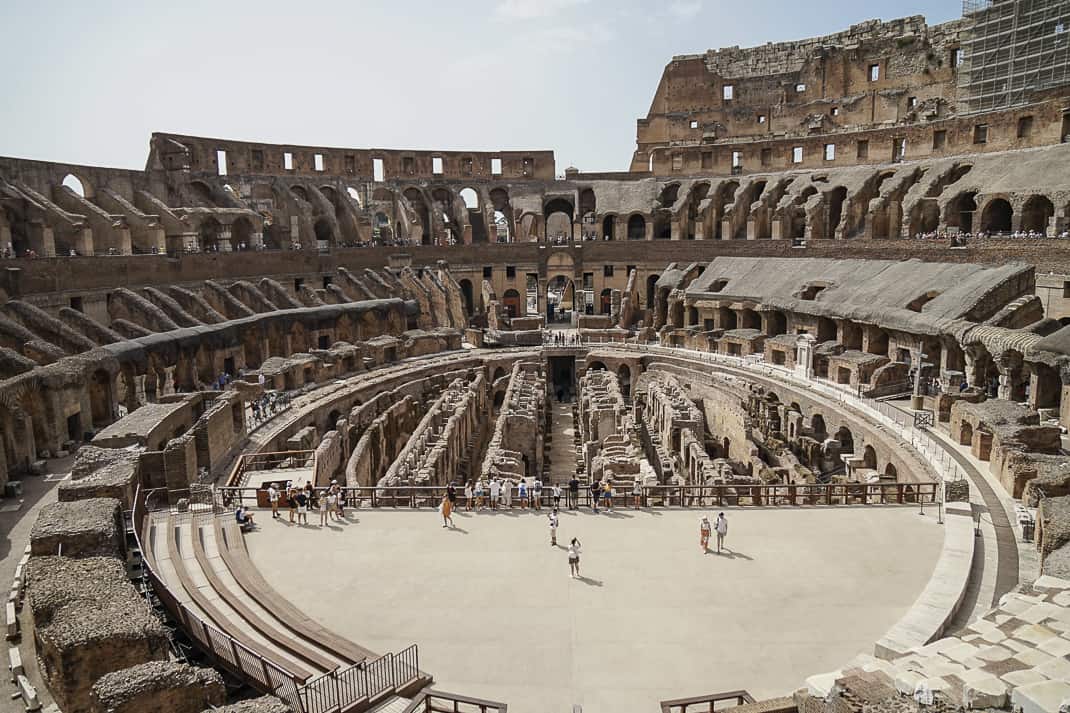
Monti
Maybe Rome’s hippest neighborhood, it’s famous for the Colosseum but it’s so much more. Its windy, narrow streets resemble Centro Storico but doesn’t get near the crowds. Make a beeline for Piazza della Madonna di Monti and hang out by the fountain with locals who flock to this place for the aperitivos in the nearby restaurants.
During Ancient Rome, Monti was one of the dirtiest, most dangerous neighborhoods. But Nero built Domus Aurea as a residence and playground here and it can be seen near the Colosseum. You also can’t miss Trajan’s Forum and it’s beautiful 125-foot, intricately designed column between the Colosseum and Piazza Venezia where you’ll find the giant white confection monument known as Il Vittoriano.
Take a stroll along Via Urbana, which goes from the Cavour Metro station to the Termini train station and is lined with hip restaurants, bars, vintage clothing stores and boutique shops.
Public transportation is excellent with subway stops at Colosseo and Cavour, and Monti is easy walking distance to Centro Storico.
Place to eat: La Taverna Romana, Via della Madonna dei Monti 79, 06-474-5325, www.monti79.it, 10 a.m.-10 p.m. Located on a lively, narrow street off Piazza della Madonna dei Monti, this family run place is where I go every Jan. 11 to celebrate my arrival in Rome. It’s casual, crowded and has all the traditional Roman favorites but try the gnocchi with mussels.
Place to drink: Oppio Caffe, Via delle Terme di Tito 72, 06-474-5262, www.oppiocaffe.it, 7 a.m.-2 a.m. Located across the street from the Colosseum and next to Nero’s Domus, this is definitely not off the beaten track. No matter. Go after the sun goes down and the tourists have returned to their hotels. Order reasonably priced drinks and sit outside and stare at the Colosseum in all its back-lit wonder.

Tridente
It’s named for the three posh boulevards, Ripetta, Corso and Babuino, that shoot out from massive Piazza del Popolo, forming a trident. Piazza del Popolo is where the Ancient Roman army entered the city when it returned from battle. Today, the piazza covers 17,000 square meters and is the site of outdoor concerts, celebrations, demonstrations and just whiling away sunny days at the outdoor cafes ringing the ground.
Take passeggiate (strolls) down each street. Via Ripetta dates back to the 1st century B.C. and goes by two beautiful 16th century sites: Palazzo Capponi della Palma and Chiesa di Santa Maria Portae Paradisi. Via del Corso is one of Rome’s main shopping streets where you can find Italian designer wear such as Benetton and Zara or upgrade to the hoity-toity side street of Via Candotti and find Prada, Gucci and Max Mara.
Shop and then cruise Via del Babuino until it ends at Piazza di Spagna where you can hang at the Spanish Steps. Babuino is named for the statue of the ancient deity Silenus, which was placed on the street in 1571. So ugly, they renamed it “Babuino,” Italian for “baboon.”
Place to eat: Babette, Via Margutta 1d, 06-321-1559, www.babetteristorante.it, babette@babetteristorante.it, 12:30-3 p.m., 7-11 p.m. Located on one of the prettiest streets in Rome, elegant Babette is a little more pricey than your average trattoria but is beautifully decorated in dark wood and has a romantic courtyard outback. I like the paccheri con crema di gorgonzola, spanacini e granella di pistacchi (short, round pasta with gorgonzola cheese, baby spinach sauce and grated pistachios).
Place to drink: Locarno Bar, Via della Penna 22, 06-361-0841, www.hotellocarno.com, booking@hotellocarno.com, 7 a.m.-midnight. Located in the five-star Hotel Locarno just a three-minute walk from Piazza del Popolo, this is a high-end cocktail lounge that still draws 50 percent locals. Choose between the retro bar counter, cozy indoor bar with fireplace or the garden courtyard with tall ferns, brass railings and retractable roof. Warning: Wine is 12-14 euros a glass, cocktails 18.

Esquilino
This encompasses the Termini train station which makes Esquilino one of the most convenient neighborhoods for transportation. Nearly every bus in town starts or ends in Termini’s parking lot and the Metro’s two main lines connect here, too.
Once the home for railway workers and government employees, it’s now gritty, noisy and a bit dodgy around the station. But Esquilino is big. Just down the street from Termini is Basilica di Santa Maria Maggiore, one of only four major Vatican basilicas in Rome. Built in the 5th century A.D., its exterior is sprinkled with 13th century mosaics. The 19-meter column outside originated from the Ancient Roman Forum.
Check out the open market just north of Piazza Vittorio Emanuele and the rooftop bar atop the Radisson Blu Es Hotel near Termini (open from May and September). I spent many a long night drinking fine wine under the stars poolside at various functions.
This is a convenient place to stay if you don’t have much time in the city. It’s also one of the cheaper neighborhoods with some of the few ethnic food selections Rome has to offer.
Place to eat: Da Vincenzo, Via Castelfidardo 6, 06-484-596, www.hostariadavincenzo.it, davincenzo1972@gmail.com, noon-3 p.m., 7-11 p.m. Monday-Saturday. Celebrating its 50th anniversary, Da Vincenzo specializes in seafood pasta where the spaghetti alla vongole (spaghetti with clams) is maybe the best I’ve had in Rome. Don’t miss the polpo e patate insalata (octopus and potato salad), served warm.
Place to drink: Trimani, Via Goito 20, 06-446-9661, www.trimani.com, carla@trimani.com, 9 a.m.-8:30 p.m. Monday-Saturday. Just north of Termini, it’s been around since 1821 and has 6,000 wines from Italy and around the world. It has olive oil and pasta, too.
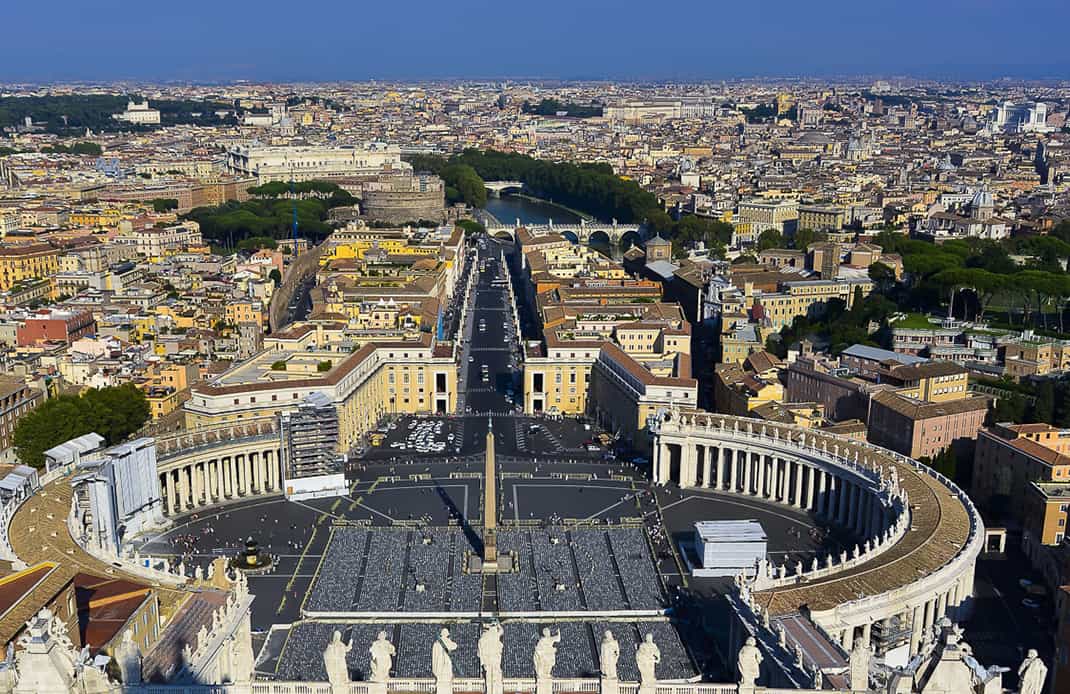
Prati
The Vatican is here so avoid it if you don’t like tourists. However, I lived here for my first year and a half in Rome and loved it. Here’s why: When the tourists leave, you have all of St. Peter’s Square to yourself and a plethora of restaurants and bars wherever you walk.
I include here the zone called Borgo which dates way before the Vatican and consists of narrow streets running alongside St. Peter’s to Castel Sant’Angelo on the Tiber. Approach the Vatican from Via della Conciliazione. In 1936 Benito Mussolini leveled the old medieval neighborhood to construct this massive boulevard to better showcase St. Peter’s as you pass by.
Castel Sant’Angelo is also on your must-see list. Emperor Hadrian built in 135 A.D. as a fortress and it later became a retreat for randy popes and their various mistresses.
For shopping, cruise Via Cola di Rienzo, lined with clothes stores and cheaper prices than you’ll find on Via del Corso. It’s where Romans shop.
Where to eat: Orecchietteria Banfi, Via Giuseppe Gioacchino Belli 116, 06-320-1505, www.orecchietteriabanfi, info@orecchietteriabanfi.it, 12:30-3:30 p.m., 7:30-11 p.m. Tuesday-Sunday. Run by Lino Banfi, a famous “sexy comedy” actor who’s been in more than 100 films, its menu is from his native Puglia, the heel of Italy’s boot. The name comes from Puglia’s ear-shaped orecchiette pasta. Try the tradizionele con brasciola pugliese e sugo di pomodori (orecchiette with Pugliese meat rolls and tomato sauce).
Where to drink: Del Frate, Via degli Scipioni 122, 06-321-1918, www.enotecadelfrate.it, 10 a.m.-1:30 p.m., 3:30-8 p.m. Tuesday-Saturday, 3:30-8 p.m. Monday. Just four blocks from Vatican City, this romantic wine bar was my favorite place to sample wine when I lived in Prati. Dark setting. Wide selection. Affordable prices.
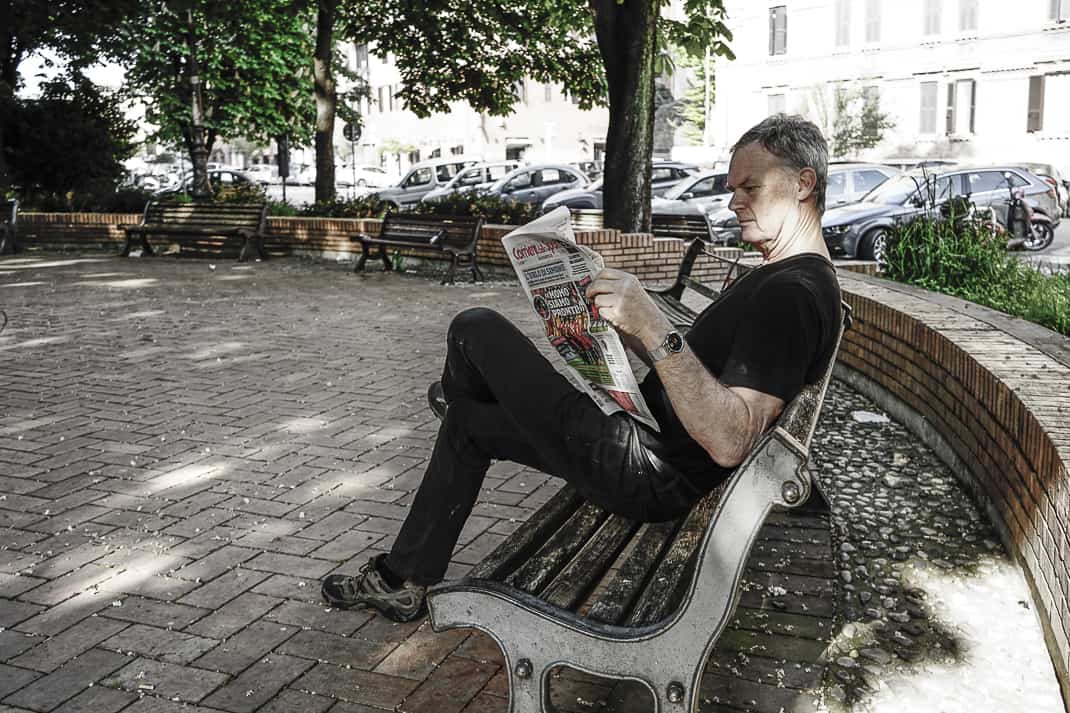
Testaccio
I lived here from 2014-18 and know it well. It’s a true prototype Roman neighborhood, with quiet piazzas, no hotels and no English spoken. During Ancient Rome it served as the warehouse for wine, grain and olive oil shipped up the Tiber. I heard Julius Caesar used to survey the warehouse around the corner from my apartment.
It later served as the city’s main slaughterhouse where the workers lived nearby and were paid partially in cheap animal parts. Even today, Testaccio is famous for its street food such as pajata (intestines of an unweaned calf), trippa (muscle wall of a cow) and coda vaccinara (oxtail stew).
Today, the old Mattatoio still has the animal pens and hooks where they hung the meat. Now the complex is used for art exhibits and occasional wine tastings.
Testaccio’s most noteworthy point of interest is a giant pile of ceramic along hopping Via Galvani. This is where Ancient Romans threw the broken-up ceramic pots that held the goods shipped to the warehouse. It still stands and is christened Mt. Testaccio.
Via di Monte Testaccio is a circular road lined with Rome’s greatest concentration of nightclubs. However, it caters to a young crowd. Come for aperitivos; leave when the music gets loud.
Where to eat: Perilli. (Check last week’s blog). Flavio al Velavevodetto, Via di Monte Testaccio 97, 06-574-4194, www.ristorantevelavevodetto.it, 12:30-3 p.m., 7:45-11 p.m. Built in a rustic, two-story villa with a charming open-air courtyard, Flavio recently won an award for the best pasta carbonara in Rome.
Where to drink: L’Oasi della Birra, Piazza Testaccio 39, 06-574-6122, 8 a.m.-1:30 p.m. Monday-Friday, 8 a.m.-1 a.m. Saturday, noon-1 a.m. Sunday. This was my hangout for four years. It features 500 types of beer from around the world and 1,500 different wines. Picnic tables set up in front for excellent socializing on warm nights on a pretty piazza.

Trastevere
Once slave quarters, once a Jewish neighborhood, once a bohemian stronghold for Rome’s artists and communists, Trastevere has been the biggest party neighborhood in town since the 1990s. It’s teeming with bars catering to Trastevere’s many American university branches.
See the mobs on Piazza Trilussa on warm nights or hanging out at the fountain in Piazza Santa Maria di Trastevere. It’s not a quiet neighborhood but the narrow, windy alleys are perfect for a passaggiata and lined with interesting eateries, shops and bars.
Trastevere is funky. Just meander through the maze and come across street musicians, artists and fortune tellers. Just avoid the stumbling American college students.
Church lovers should check out to 12th century churches Santa Maria Trastevere and its beautiful mosaics on its piazza and San Francesco a Ripa where you can find Gianluca Bernini’s statue of the Blessed Ludovica Albertoni.
Where to eat: Da Enzo al 29, Via dei VasceIlari 29, 06-581-2260, www.daenzoal29.com, 12:15-3 p.m., 7-11 p.m. Monday-Saturday. It’s a lively debate who has the best carbonara in Rome between Flavio and Enzo. No reservations are taken and people still line up to grab one of the few tables inside and a few outside on a quiet back alley.
Where to drink: VinAllegro, Piazza Giudetta Tavani Arquati 114, 06-589-5802, www. Vinallegro.com, vinallegro@gmail.com, noon-2 a.m. This is my favorite place to drink in Trastevere. It’s dark and cozy with a small patio seating outside. It has a long drink-by-the-glass menu and a good aperitivo.

San Giovanni
This is one of Rome’s drabbest neighborhoods. It was laid out in a boring street grid in the 19th century and is home to many cheap shops, restaurants and department stores. However, it’s well connected to the Metro and has two must sees.
San Giovanni in Laterano is not only one of four papal churches (like Santa Maria Maggiore, it’s actually part of the Vatican), it’s the oldest in the western world, being built in the 4th century A.D.
Also, the Terme di Caracalla was built in 216 A.D. and was where many of the masses bathed. That is until the Visigoths destroyed the feeding aqueduct in 410 A.D. You can still tour the well-preserved ruins if not actually taking a bath.
For soccer fans, this is a bit of a mecca. San Giovanni is the childhood neighborhood of Francesco Totti, AS Roma’s greatest player in history and maybe the most popular Roman since Caesar Augustus. Check out Core de Roma (“Rome’s Heart” in Roman dialect), a good pizzeria decked out in Roma’s red and yellow colors a block from Totti’s home where he grew up.
Where to eat: Sa Posada, Via Elvia Racina 28/38, 06-700-2923, www.saposada.it, noon-3, 6-midnight Tuesday-Sunday. Rome restaurants get criticized for having too many similar menus but the city has many restaurants from Italian regions. Sa Posada (“trattoria” in Sardo dialect) is a Sardinian restaurant where just Sunday night I had gnocchi cervo (potato dumplings in deer sauce). Don’t pass up a glass of Cannonau, Sardinia’s delicious but potent red wine.
Where to drink: Enoteca Bonomi, Circonvallazione Appia 17, 06-781-0689, www.enotecawinebarbonomi.it, 9:30 a.m.-1 p.m., 2:30 p.m.-midnight Monday-Saturday. Started in 1934 as an olive oil store, it added a wine bar in 2012. Very local hangout with outdoor seating.
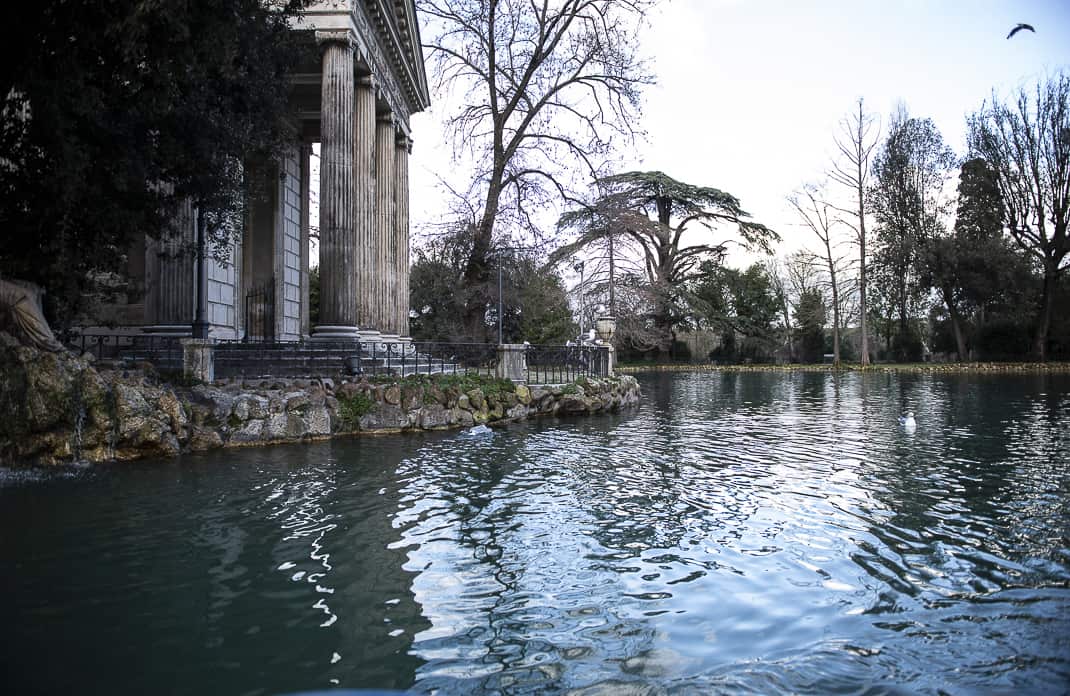
Northern Rome
This is a big area, including a few zones: posh Via Veneto, lined with five-star hotels and expensive bars where the paparazzi once annoyed stars and starlets; Villa Borghese, probably Rome’s prettiest park where you can picnic and then tour the beautiful Borghese Gallery, my favorite museum in Rome; Flaminio, the area north of Piazza del Popolo where you can catch a soccer game at historic Olympic Stadium or get some real local food.
It also includes Parioli, maybe Rome’s most exclusive neighborhood with tree-lined boulevards shading beautifully dressed people dining at outdoor cafes. Parioli abuts Villa Ada, almost as pretty as Villa Borghese but not nearly as well known.
Besides the Borghese Museum, the Museo Nazionale Etrusco has artifacts of Rome’s first settlers, and you can go modern at MAXXI, Rome’s 12-year-old modern art museum that has numerous exhibits, including some of the best photographers in the world.
The hotels all have beautiful bars but brace yourself for sticker shock.
Where to eat: Siciliainbocca al Flamino, Via Flaminio 390, 06-324-0187, www.siciliainboccaalflaminio.com, 12:45-2:30 p.m., 7:45-11:45 p.m. Ever tried Sicilian food? It’s my favorite food region in Italy. This specializes in Sicilian cuisine, particularly seafood. Try its specialty: pasta sarde (spaghetti with sardines, fennel and pine nuts and covered in breadcrumbs).
Where to drink: Enoteca Bulzoni, Viale dei Parioli 34, 06-807-0494, www.enotecabulzoni.it, info@enotecabulzoni.com, 10 a.m.-1:30 p.m., 4:30-11 p.m. Monday-Saturday. Started in 1929, this no-frills wine bar has 700 wines from Italy and France on Parioli’s pretty tree-lined main drag.
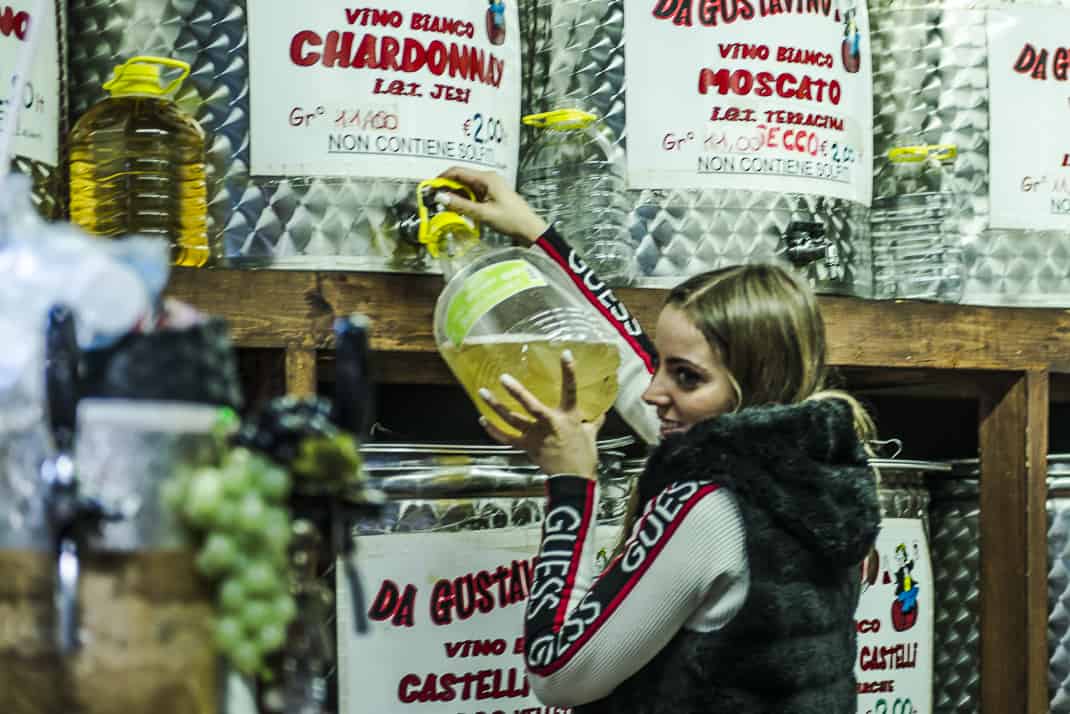
Monteverde
Mussolini’s friends helped build this neighborhood which has been my home for the last four years. Il Duce even built Rome’s first public housing up the street from my apartment. Now it’s condos.
Monteverde is where you want to go to find nature. Go for a jog or a walk in the sprawling 450-acre Doria Pamphilj park featuring its 17th-century villa.
Go to Gianicolo Hill for terrific views of the city, a great place to split a bottle of wine. See what a real old-fashioned Roman public market is like at Mercato San Giovanni di Dio where you can get the freshest produce in an authentic atmosphere you won’t find in the media.
Monteverde is divided between Monteverde Vecchio up the hill and Monteverde Nuova where I live just above Trastevere. The street grid is dull. The piazzas are few. But it’s a great place to get the feel of a real Roman neighborhood without a hint of tourism. Plus, it’s only a 10-minute tram ride from Centro Storico.
Where to eat: Bruno ai Quattro Venti (link to last week’s blog). Osteria dal 1931, Via di Donna Olimpia 44, 06-537-0032, www.osteriadal1931.it, noon-3 p.m., 7:30-11 p.m. As the sign says, it’s been around for more than 90 years, still under the same family and serving up great Roman dishes in a space lined with pictures of celebrity diners such as Anthony Bourdain. It has a romantic garden setting outside.
Place to drink: Al Grammelot, Via Gracinto Carini 39, 06-580-9166, www.algrammelot.it, algrammelot@gmail.com, 10 a.m.-3 p.m., 6 p.m.-midnight Tuesday-Saturday, 6 p.m.-midnight Sunday. Don’t let the small space with 12 tables fool you. This former fruit and vegetable shop has 1,500 wines and eclectic appetizers such as fusaja (Roman beans) and porchetta (sizzling, suckling pig).


February 8, 2022 @ 2:39 pm
I love this! Thank you! Will refer to it (and your restaurant blog) when we next visit Rome this coming Spring.
February 8, 2022 @ 2:58 pm
Excellent blog on the neighborhoods of Roma we are coming in June and have already downloaded your info. Keep up the great work
February 8, 2022 @ 5:26 pm
Damn, guess I have to come back and try some of the places I missed. Great piece,John.
February 9, 2022 @ 5:59 am
Excellent tips. I’ll print this and keep it. I’m with you on Tazzo d’Oro. I go there every time I am in Rome.